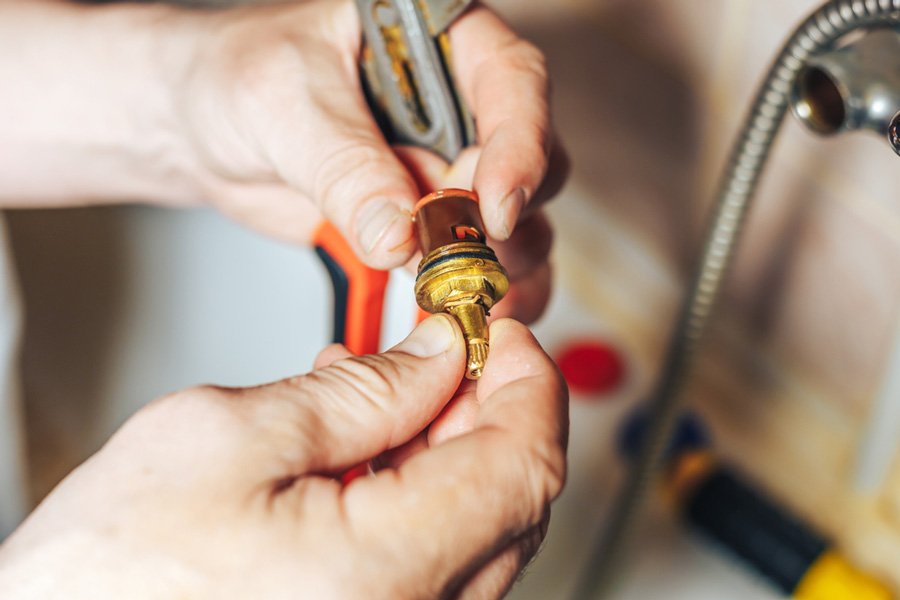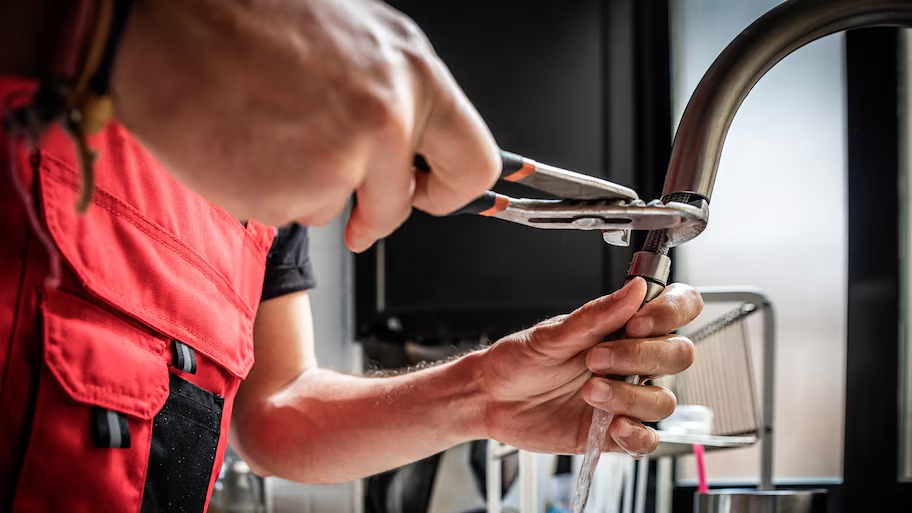Uncovering the Significance of Repairing a Leaking Faucet
Uncovering the Significance of Repairing a Leaking Faucet
Blog Article
Just how do you actually feel with regards to Should I Repair or Replace a Leaky Faucet??

Leaking taps could seem like a minor hassle, however their influence goes beyond just the inconvenience of the noise. From drainage to sustaining unnecessary monetary expenses and health and wellness dangers, disregarding a trickling faucet can lead to various effects. In this write-up, we'll explore why it's critical to resolve this typical household concern without delay and successfully.
Wastage of Water
Ecological Impact
Dripping taps contribute dramatically to water waste. According to the Environmental Protection Agency (EPA), a single faucet leaking at one drip per secondly can lose more than 3,000 gallons of water per year. This not just strains water resources yet also impacts communities and wild animals depending on them.
Financial Costs
Enhanced Water Bills
Beyond the environmental effect, leaking taps can pump up water costs significantly. The gathered wastefulness over time equates into greater utility costs, which might have been stayed clear of with timely fixings.
Possible Residential Or Commercial Property Damage
Moreover, prolonged trickling can cause harm to fixtures and surface areas surrounding the tap. Water build-up can cause discoloration, corrosion, and also structural concerns if left unattended, causing additional repair service costs.
Wellness Issues
Mold And Mildew and Mildew Growth
The consistent presence of moisture from a dripping faucet produces an excellent environment for mold and mold growth. These fungis not only jeopardize interior air quality however also position health and wellness dangers, especially for people with respiratory system problems or allergic reactions.
Waterborne Diseases
Stationary water in leaking faucets can become a breeding ground for bacteria and other pathogens, increasing the risk of waterborne conditions. Impurities such as Legionella microorganisms flourish in stagnant water, possibly causing major ailments when consumed or inhaled.
Do it yourself vs. Professional Repair service
Advantages and disadvantages of DIY Repair Work
While some might attempt to take care of a dripping faucet themselves, DIY fixings include their very own collection of obstacles. Without correct understanding and tools, do it yourself efforts can intensify the issue or bring about insufficient repairs, prolonging the trouble.
Advantages of Employing a Professional Plumber
Working with a professional plumber makes sure that the underlying cause of the leaking faucet is resolved properly. Plumbers have the know-how and tools to detect and fix tap issues effectively, saving time and reducing the risk of further damages.
Step-by-Step Overview to Dealing With a Dripping Faucet
Tools Called for
Before attempting to repair a dripping tap, gather the necessary devices, consisting of an adjustable wrench, screwdrivers, replacement parts (such as washers or cartridges), and plumber's tape.
Usual Tap Issues and Their Solutions
Recognize the sort of tap and the details issue triggering the drip. Common troubles include worn-out washers, rusty shutoff seats, or faulty O-rings. Refer to manufacturer guidelines or on the internet tutorials for detailed assistance on repairs.
Preventive Measures
Normal Upkeep Tips
To avoid leaking taps, carry out regular upkeep such as cleaning up aerators, evaluating for leakages, and changing damaged components immediately. Furthermore, think about setting up water-saving devices or upgrading to extra reliable fixtures.
Importance of Prompt Services
Resolving leaking faucets as quickly as they're observed avoids more water waste and potential damages, ultimately conserving both water and cash over time.
Impact on Home Value
Understanding of Well-Maintained Residential Or Commercial Property
Preserving a residential or commercial property in good condition, consisting of attending to maintenance concerns like trickling taps, improves its perceived value and value amongst potential customers or tenants.
Influence on Resale Value
Residences with properly maintained plumbing fixtures, including faucets, command greater resale worths in the real estate market. Addressing trickling taps can add to a favorable impression throughout property assessments and settlements.
Environmental Duty
Private Contribution to Preservation
Taking obligation for taking care of dripping faucets aligns with more comprehensive efforts toward water preservation and ecological sustainability. Every individual's activities jointly make a substantial influence on maintaining valuable sources.
Sustainable Living Practices
By focusing on punctual repair services and adopting water-saving behaviors, people contribute to lasting living practices that benefit both existing and future generations.
Verdict
Dealing with a trickling tap goes beyond simple convenience; it's a necessary step toward conserving water, minimizing financial costs, and safeguarding health and home. Whether through DIY fixings or specialist support, doing something about it to take care of dripping taps is a little yet impactful way to promote accountable stewardship of sources and add to a much healthier, extra sustainable future.
Most Common Reasons for a Leaky Faucet and How to Stop the Drip
Whether it’s your kitchen faucet leaking or a bathroom faucet leaking, one leaky faucet can waste anywhere from three to 30 gallons of water every single day. If the constant drip-drip-drip doesn’t get your attention, your water bill will. The good news is that, by following a few simple steps, chances are pretty good you can fix the problem yourself.
Why is it dripping?
Before you start taking things apart, let’s break down some of the most common causes of a leaky faucet.
Bad O-ring.
A cartridge is a valve that controls the flow of water into the faucet spout. On cartridge faucets there’s an O-ring—the little disc attached to the stem screw that holds the faucet handle in place. If it’s loose or worn-out, it can cause your sink handle to leak. Of course, the cartridge itself could be worn out. If that’s the case, make sure you replace it with the exact same kind.
Corroded valve seat.
The valve seat connects the faucet and the spout. If the leak seems to be coming from the spout, it might be because a buildup of water sediment has corroded the valve seat.
Worn-out washers or seals.
A leaky spout could be caused by a bad washer that rests against the valve seat. It’s just a matter of time before friction takes its toll. It could also be the wrong size washer or one that’s been installed incorrectly. Water sediments can also corrode inlet and outlet seals.
Water pressure.
If the faucet only drips now and then, or when you turn the handles a certain way, you should probably check your home’s water pressure.
Loose or broken parts.
The adjusting ring and packing nuts in the stream screw can become loose over time, causing your sink handle to leak. Try tightening or replacing the packing nut. If the leak is coming from the pipes underneath the sink, you probably have a broken pipe or fitting. If that’s the case, you should definitely call a plumber.
Know your faucet.
Faucets come in a variety of types. Each one has its own assembly—and its own possible causes of leaks. Learning about the four most common kinds of faucets will help you know how to take them apart and make any repairs.
How to stop a leaky faucet
Fixing that leaky faucet doesn’t have to take a lot of time, money, or expertise. It’s usually a simple matter of replacing a worn-out washer or gasket, a loose O ring, or another part. Chances are really good you can do this yourself if you follow these simple steps.
Shut off the water.
Before you tackle the faucet, cut off the water supply to the sink. There should be one valve for hot and one for cold. Hand-turn them clockwise with your hands till they close. If there are no valves under the sink, head to the basement and shut off the main water supply to the house. Then turn on the faucet until it empties out the water that’s still in the line and you’re ready to start. It’s a good idea to cover the sink drain with a plug or a rag so you don’t lose any small pieces and parts while you’re working.

Do you like reading about ? Write a comment below. We'd be pleased to hear your suggestions about this article. In hopes that you come back again soon. Appreciated our write-up? Please share it. Help other people locate it. We appreciate reading our article about What Causes Leaky Faucets & How To Fix Them.
Report this page